
9 UNEP Introduction on Solid Waste Niu Dongjie niudongjie@tongji.edu.cn
Introduction on Solid Waste Niu Dongjie niudongjie@tongji.edu.cn

Content oIntroduction o What are Wastes and ISWM? o Characteristics of Waste 490 9 UNEP
Content Introduction What are Wastes and ISWM? Characteristics of Waste
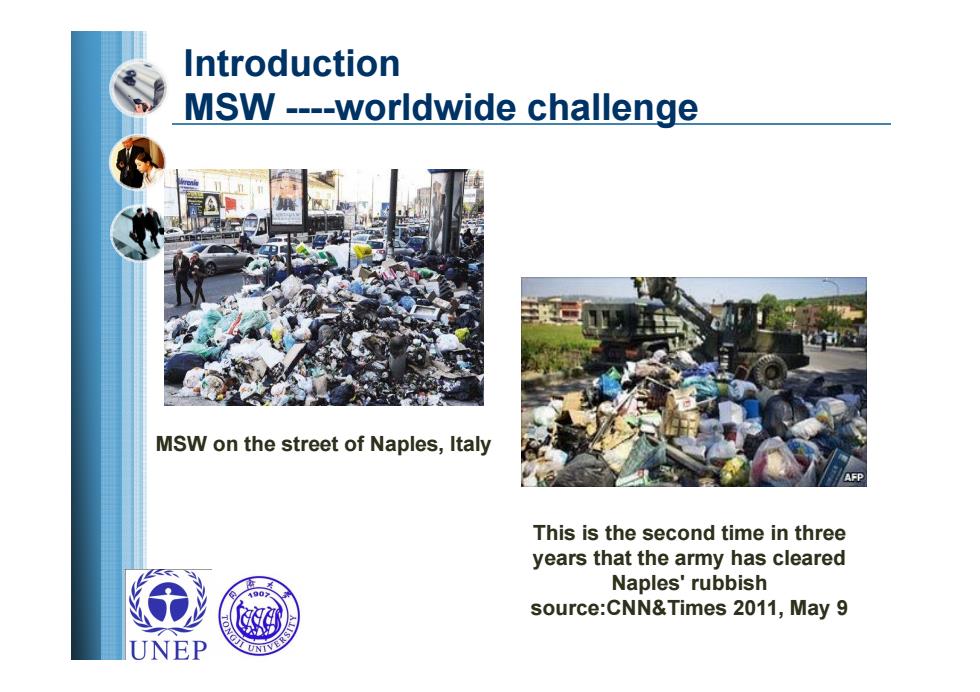
Introduction MSW----worldwide challenge MSW on the street of Naples,Italy This is the second time in three years that the army has cleared Naples'rubbish 490 source:CNN&Times 2011,May 9 UNEP
Introduction MSW ----worldwide challenge MSW on the street of Naples, Italy This is the second time in three years that the army has cleared Naples' rubbish source:CNN&Times 2011, May 9
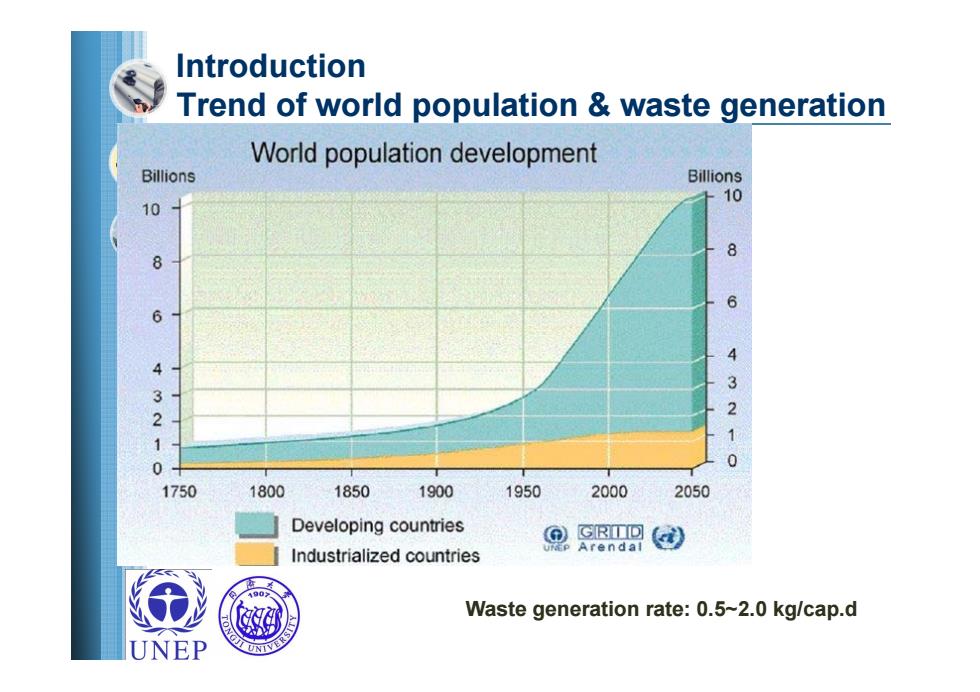
Introduction Trend of world population waste generation World population development Billions Billions 10 10 8 6 6 432 4321 0 0 1750 1800 1850 1900 1950 2000 2050 Developing countries GRID Arendal Industrialized countries 4907 Waste generation rate:0.5~2.0 kg/cap.d UNEP
Introduction Trend of world population & waste generation Waste generation rate: 0.5~2.0 kg/cap.d

What are Wastes? Comprises all the wastes arising from human and animal activities that are normally solid and that are discarded as useless or unwanted. Basel Convention Definition of Wastes "substances or objects which are disposed of or are intended to be disposed of or are required to be disposed of by the provisions of the law" Disposal means 'anyoperation which may lead to resource recovery, g,reclamation,direct re-use or alternative uses IVB of the Basel convention)" UNEP 5
5 What are Wastes? Comprises all the wastes arising from human and animal activities that are normally solid and that are discarded as useless or unwanted. Basel Convention Definition of Wastes “substances or objects which are disposed of or are intended to be disposed of or are required to be disposed of by the provisions of the law” Disposal means “any operation which may lead to resource recovery, recycling, reclamation, direct re-use or alternative uses (Annex IVB of the Basel convention)

Some important features o Waste contains the same materials as are found in useful products o Only differs from useful materials by its lack of value o The lack of value can be related with mixed and unknown composition of the waste. UNEP
Some important features Waste contains the same materials as are found in useful products Only differs from useful materials by its lack of value The lack of value can be related with mixed and unknown composition of the waste
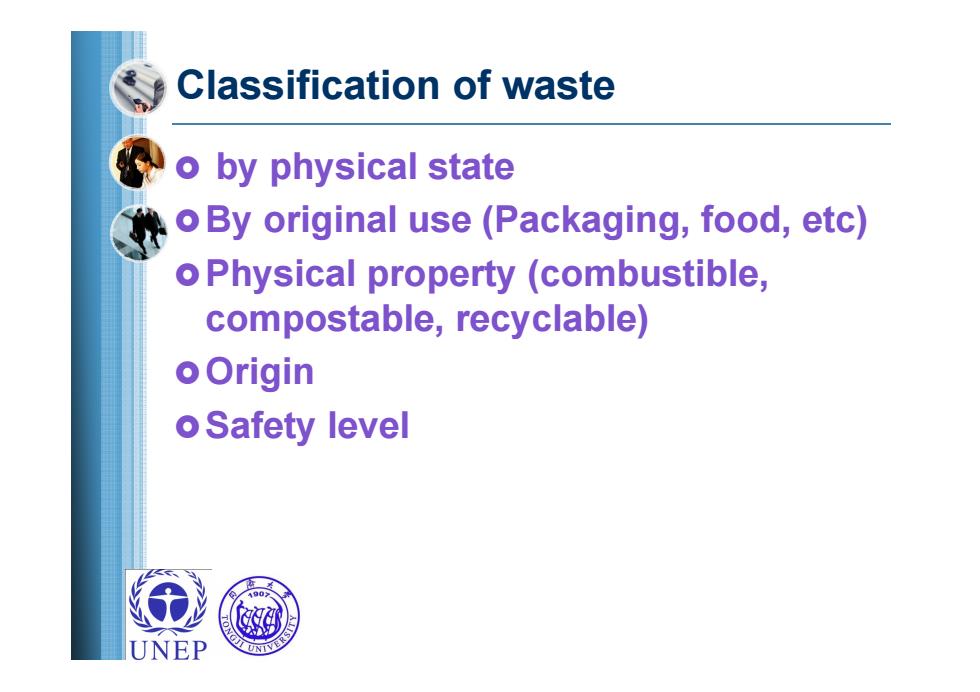
Classification of waste o by physical state o By original use(Packaging,food,etc) o Physical property (combustible, compostable,recyclable) o Origin o Safety level 9 UNEP
Classification of waste by physical state By original use (Packaging, food, etc) Physical property (combustible, compostable, recyclable) Origin Safety level
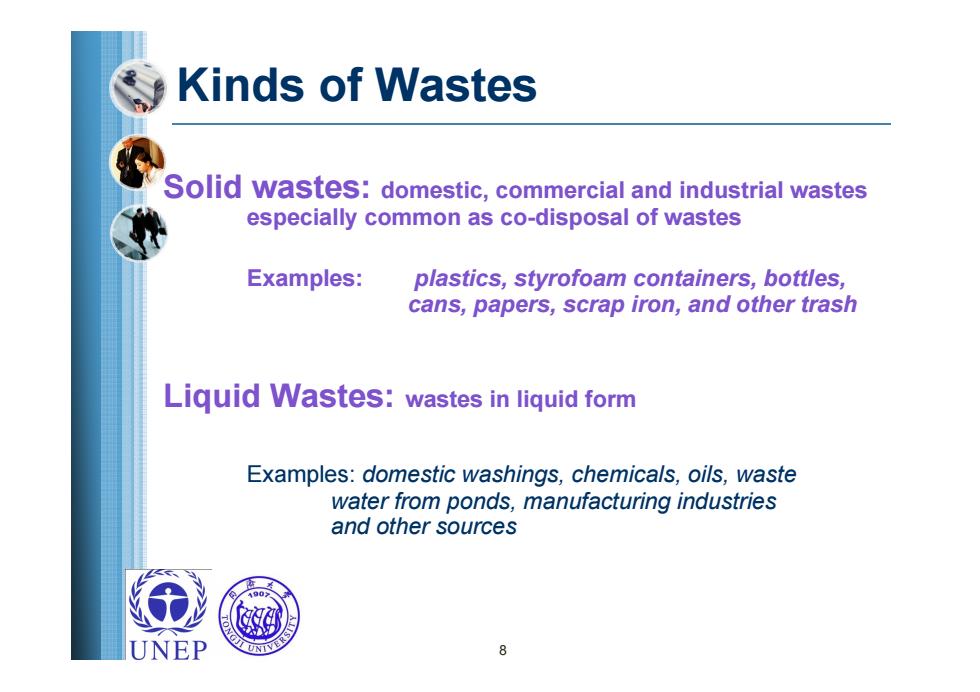
Kinds of Wastes Solid wastes:domestic,commercial and industrial wastes especially common as co-disposal of wastes Examples: plastics,styrofoam containers,bottles, cans,papers,scrap iron,and other trash Liquid Wastes:wastes in liquid form Examples:domestic washings,chemicals,oils,waste water from ponds,manufacturing industries and other sources 90 UNEP 8
8 Kinds of Wastes Solid wastes: domestic, commercial and industrial wastes especially common as co-disposal of wastes Examples: plastics, styrofoam containers, bottles, cans, papers, scrap iron, and other trash Liquid Wastes: wastes in liquid form Examples: domestic washings, chemicals, oils, waste water from ponds, manufacturing industries and other sources
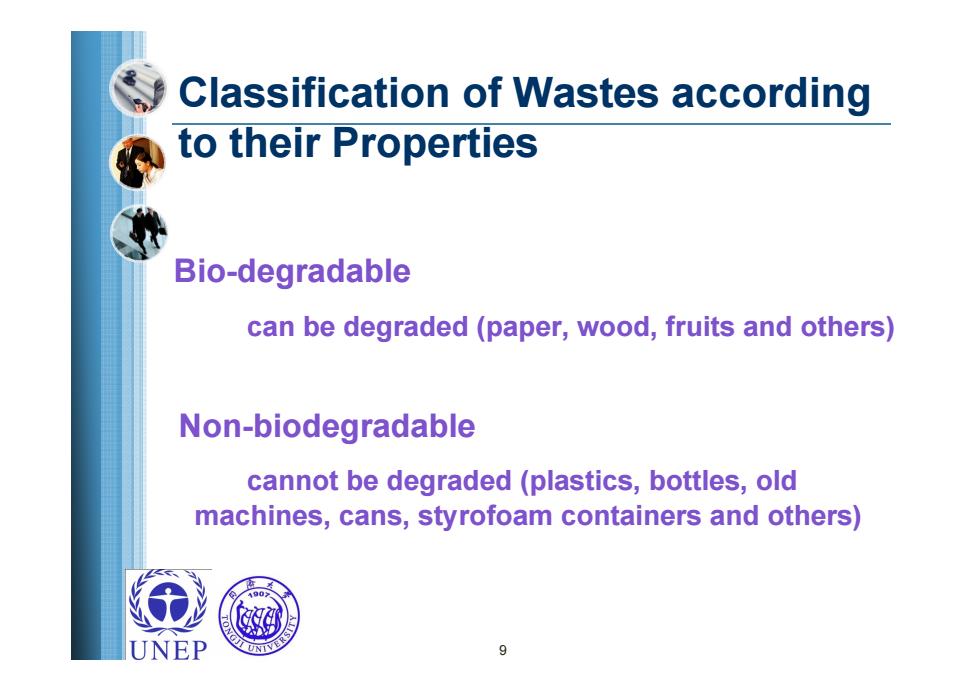
Classification of Wastes according to their Properties Bio-degradable can be degraded (paper,wood,fruits and others) Non-biodegradable cannot be degraded (plastics,bottles,old machines,cans,styrofoam containers and others) 90 UNEP 9
9 Classification of Wastes according to their Properties Bio-degradable can be degraded (paper, wood, fruits and others) Non-biodegradable cannot be degraded (plastics, bottles, old machines, cans, styrofoam containers and others)
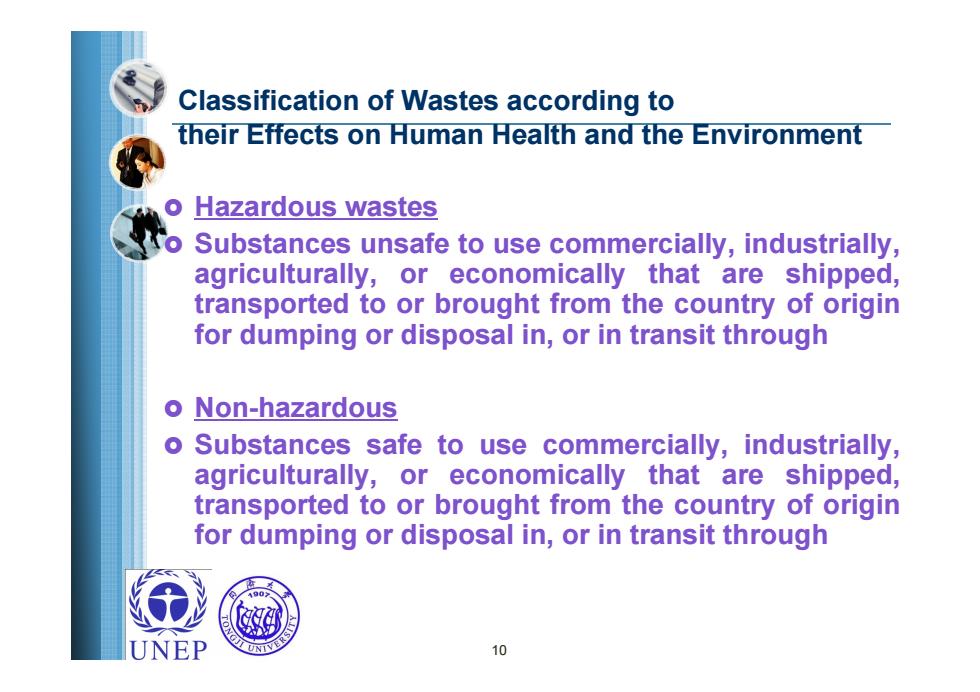
Classification of Wastes according to their Effects on Human Health and the Environment Hazardous wastes Substances unsafe to use commercially,industrially, agriculturally,or economically that are shipped, transported to or brought from the country of origin for dumping or disposal in,or in transit through o Non-hazardous o Substances safe to use( commercially,industrially, agriculturally,or economically that are shipped, transported to or brought from the country of origin for dumping or disposal in,or in transit through UNEP 10
10 Classification of Wastes according to their Effects on Human Health and the Environment Hazardous wastes Substances unsafe to use commercially, industrially, agriculturally, or economically that are shipped, transported to or brought from the country of origin for dumping or disposal in, or in transit through Non-hazardous Substances safe to use commercially, industrially, agriculturally, or economically that are shipped, transported to or brought from the country of origin for dumping or disposal in, or in transit through